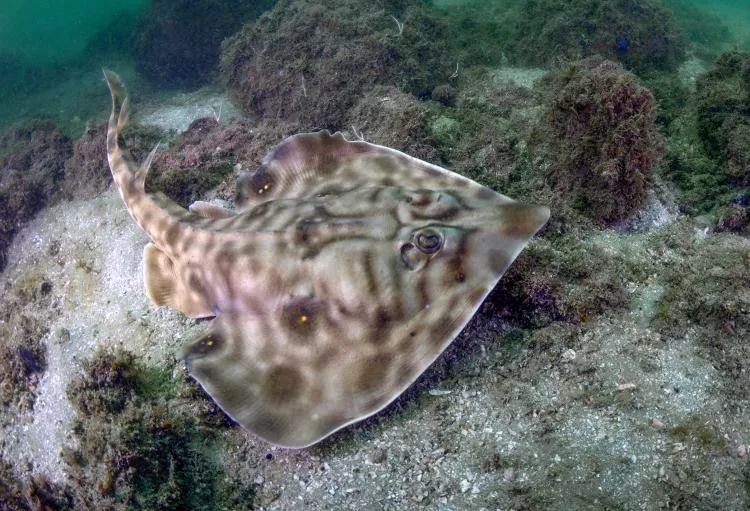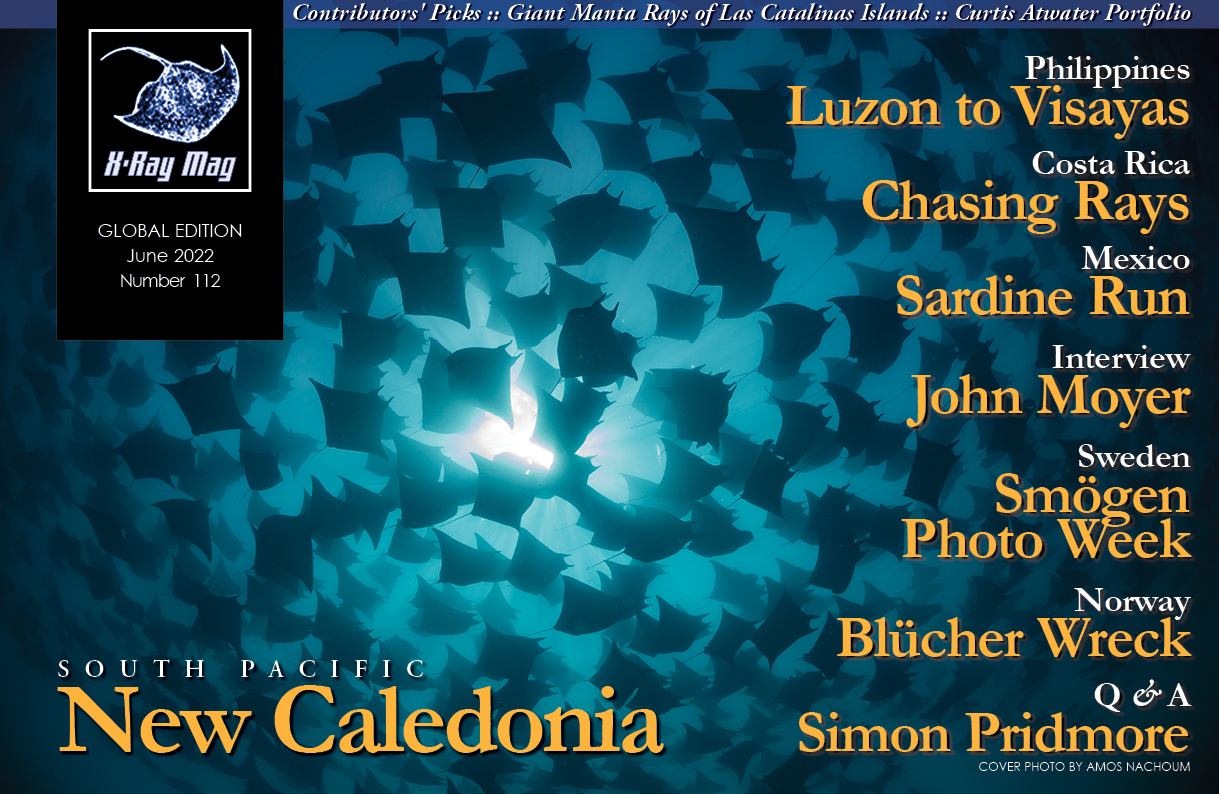Shark aficionado, photojournalist and conservationist Andy Murch, a self-confessed “elasmo-holic,” braves the chaos of Christmas holiday travel during a pandemic to get to Costa Rica, in his quest to capture images of elusive sharks and rays in areas less travelled.
Contributed by
Christmas week 2021 was a ridiculous time to fly to Costa Rica. Besides the inevitable holiday chaos, almost every flight south had been grounded by either arctic blizzards or Omicron.
Any rational photographer would have delayed the trip until travel was easier, but I am an “elasmo-holic;” if there is even a slim chance of photographing a new species of shark or ray, I will find a way to make it happen.
It was touch and go, but three ticket changes and four airlines later, I stepped out of the terminal in San Jose, albeit with no luggage, clothing or dive gear. None of that mattered though, because I had my camera gripped tightly in hand for the adventure ahead!
Local elasmobranch fanatic Dr Luis Huertas (owner of Seakret Divers) was patiently waiting for me at the airport. As we drove north, we strategised about where to hunt for rarely seen species. On previous trips, I had bagged most of the common Costa Rican rays, but with Luis’ help, I was hoping to track down several more that are rarely encountered.
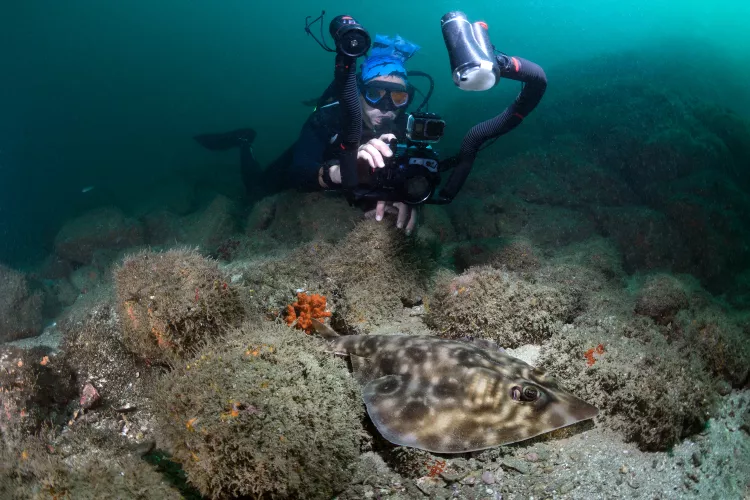
By the time we reached Playa Del Coco, it was almost midnight. The night watchman at my hotel informed me that they had rented out my room, and it being Christmas week, there were no other rooms available anywhere in town.
After much discussion, he took pity on my haggard demeanour and led me to a shack, containing a creaky bed with torn, dubiously cleaned sheets, and a fan that sounded like an industrial turbine but unfathomably pushed no air downwards whatsoever.
After assembling my camera housing, I drifted into a restless sleep, interrupted periodically by an angry guard dog, leashed outside my window.
The next morning, I wearily donned my heavy winter boots and headed out into the tropical sun to meet Luis who, it turned out, was having no better luck than I. His accommodation had also fallen through, so he had slept on top of his truck. Now, his truck battery had died, but undaunted, we got a boost and made our way to the boat.
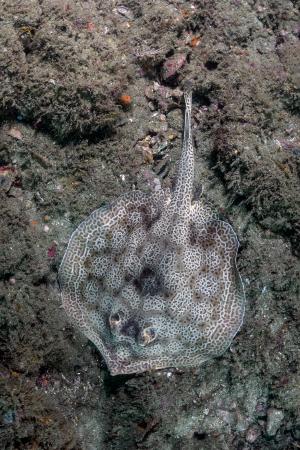
Old Man’s Corner
Our first drop was at an unnamed spot south of Playa Del Coco. The site was one of many that Luis had pioneered while working as a divemaster in the area, years before. Today, he dubbed the site “Old Man’s Corner,” in honour of the way we were both feeling that morning.
At first glance, the volcanic reefs of Costa Rica’s Pacific slope appear rather barren compared to the coral-encrusted slopes of the Caribbean coast, but the moon-like terrain supports a surprising abundance of marine life if you know where to look—including an extremely diverse assemblage of sharks and rays that would impress the most jaded elasmophile.
Touching down in 10m of sand, the first rays we encountered were leopard round rays (Urobatis Pardalis), a recently described species that only occurs along a short stretch of coastline from northern Costa Rica to central Panama. Where they occur, they are extremely abundant, so we quickly moved on, preferring not to waste precious bottom time on such a common species.
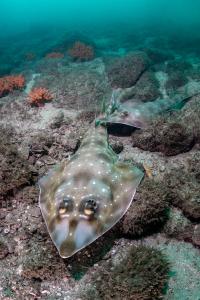
A few minutes later, we came across a lovely pair of Gorgona guitarfishes (Pseudobatos prahli) resting among some reef rocks. The larger of the two was female, the smaller one a male. They may have just mated, but if so, we did not see any signs.
Although I have encountered numerous Gorgonas in the past, I am a sucker for guitarfishes, and this species (with their yellow eyeshadow and a sprinkling of white spots) was one of the prettiest. So, I paused a while to compose some nice portraits, while Luis surveyed the area.
At 30m, the terrain finally flattened out. We kicked along the margin of the reef where we could keep one eye on the sand, and the other on the rocky slope. Occasionally, we encountered more leopard rays in various states of concealment; some proudly displaying their intricate markings, others completely buried except for their protruding spiracles.
Missed photo opportunity
A large longtail stingray (Hypanus longus) flapped past, speeding up when I closed in for a snapshot. I continued counting leopard rays, 16, 17… and then I saw the outline of a small round ray with a nose that seemed a little too pointy.
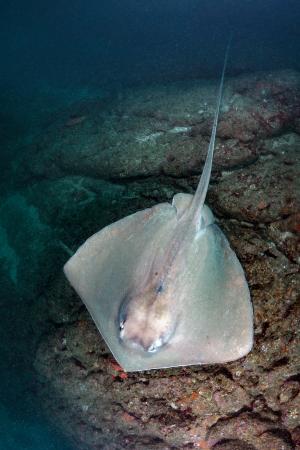
Gently wafting some sand from its back, instead of fine reticulations, this one was plain brown with small dark blotches. My first Chilean round ray! Before my brain could send the appropriate signals to my trigger finger, it bolted. I gave chase, but after keeping it in sight for the better part of two minutes and burning up most of my remaining gas supply, I knew it was a lost cause.
Disappointed, I returned to the slope and began to ascend, keeping a wary eye on my SPG (submersible pressure gauge). That was when Luis started screaming through his regulator and pointing frantically at the reef.
Below him was an exquisite southern banded guitarfish (Zapteryx xyster) nestled between two rocks. Easily recognizable by its heart-shaped disc, marked with clusters of brilliant yellow spots, this was a species I had been looking for in various locations in Central America for the better part of a decade. What a find!
My time with it was frustratingly short. After a handful of rushed compositions, I drifted upwards, drinking in its details until it was lost in the green haze below me.
One dive. Five ray species. Two of them “lifers.” This week was going to be epic!
Patient model at shark shallows
We dived again, nearby at a site called Shark Shallows. There were not quite as many rays this time but still a good selection, including another southern banded guitarfish. This time, it was a younger animal lacking yellow clusters of spots.
Fortunately, this one sat patiently while I fussed around it, taking shots from every angle, like a tailor measuring a client for a new suit.
After a third shallower dive, mostly involving leopard rays, we returned to shore, and I headed into town to buy some thinner clothes before checking into my real hotel room. Skipping dinner, I was asleep in minutes.
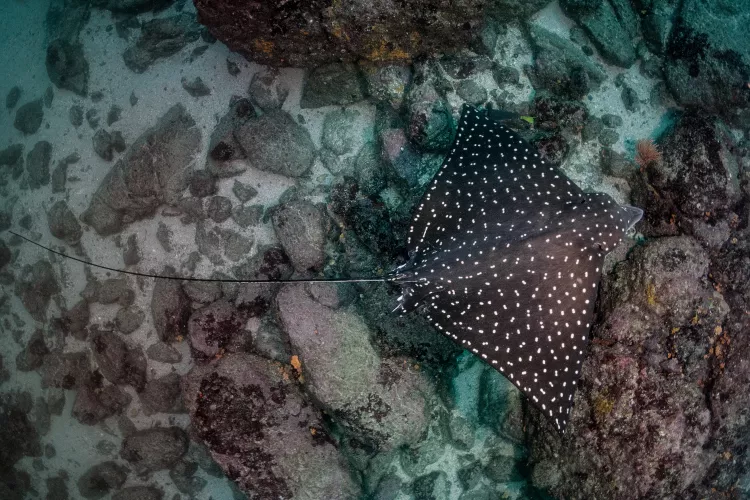
Eagle rays at Sorpresa
The next day started with a dive at Sorpresa (Surprise Reef). More leopard round rays, no surprise there. The highlight was an Eastern Pacific spotted eagle ray (Aetobatus laticeps). There used to be just one spotted eagle ray species, but a few years ago, taxonomists decided there were enough differences between regional populations to warrant a three-way split. So now, we have A.narinari in the Atlantic, A.ocellatus in the Indo-Pacific, and A.laticeps in the Eastern Pacific.
At a glance, they are a little tricky to tell apart, but their ranges do not overlap, so you always know which one you are looking at.
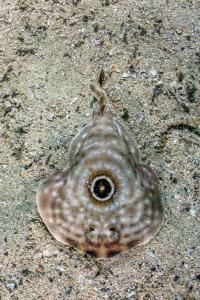
Mirador. Our next dive was at Mirador—a good spot to find bullseye electric rays, and find them we did!
Many rays display ocelli (eyespots) on their pectoral fins to make predators think that a larger animal is looking back at them. The illusion works best if your fins are wide enough for the eyespots to look menacing, but bullseye electric rays are not much bigger than a tea plate. So, they display one large eyespot and hang out in pairs for added effect.
El Jobo. Still bitter about missing the Chilean round ray, we drove 60km north to El Jobo the following day; it was a small fishing village near the Nicaraguan border.
Many years ago, I saw a picture of a Chilean ray taken by a biologist in this very bay. Although leopard round rays are ten for a penny, other Central American round rays are extremely hard to find, so a whiff of a chance was enough to warrant an exploratory dip.
With no dive shops in the area, our plan was to conduct a couple of shallow shore dives around the moorings of the fishing boats.
I had barely put my head in the water when the first Chilean round ray darted out of the sand directly below me. This one was far more relaxed than the shy one near Playa Del Coco, allowing me to get plenty of snaps before it finally zipped off. My second lifer of the trip, firmly in the bag.
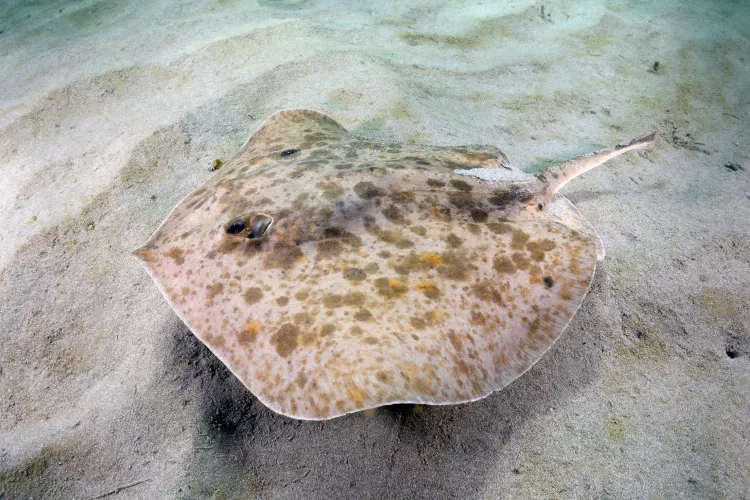
Chilean round rays everywhere
Five minutes later, we were swimming among the boat moorings, unearthing one Chilean round ray after another. Interestingly, there seemed to be two colour morphs, a very dark one with a scattering of blackish spots, and a beautiful lighter morph with a denser spot pattern, which looked uncannily like a fried tortilla.
Beyond the moorings, we came upon a shallow reef, rising out of the sand. Although the reef itself was nothing to write home about, it was well populated with guitarfishes, especially the southern banded kind, which were apparently not that rare after all, once we knew where to look.
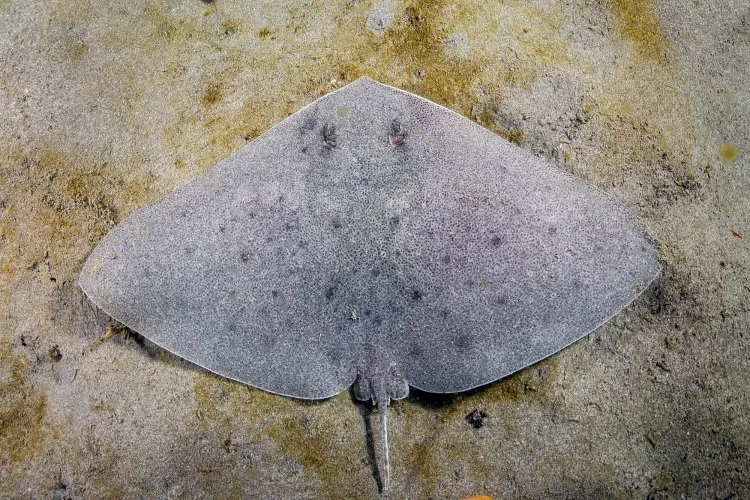
Chilly waters
The reason Playa El Jobo is so different from Playa Del Coco became uncomfortably obvious as soon as we dipped our toes in the water. Exposed to the offshore north wind, El Jobo is a good six degrees colder than the other dive sites we had visited.
Consequently, deeper species that would normally live below the ever-present thermocline were able to enter this bay without getting heatstroke. I mused about what we might find below El Jobo’s even colder thermocline, but without a drysuit, I decided that would have to wait for another trip.
After a decent surface interval to stave off hypothermia, we slipped in at an adjacent bay that looked promising. Again, we were greeted by scores of Chilean round rays, some clearly gravid.
While moving from ray to ray to record a good variety of identification shots, I ran into a small male that was eagerly pursuing a larger female. Eventually, he bit down on her pectoral fin, but she wanted none of it. Wriggling free, she disappeared in a cloud of sand.
Luis floated nearby, pointing out hidden stingrays whenever I was unoccupied.
Over the last three days, I had become used to his underwater vocalizations, so when his pitch suddenly rose a few decibels, I knew he had spotted something worth investigating. Swimming over, he pointed out a tiny, pink Mazatlan butterfly ray (Gymnura crebripunctata). Another lifer!
It was not much larger than my open hand. If all went well for this newborn pup, it would eventually grow six-fold, turn a much deeper brown, and develop a subtle pattern of large dark spots. Right now, it was more concerned with concealing itself under a layer of sand, which it did clumsily as if not yet used to its oversized pectoral fins.
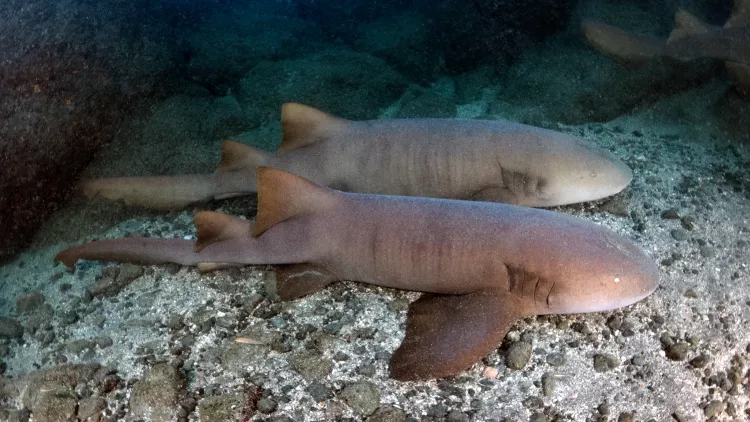
The Washing Machine
The next day, we were back in Playa Del Coco looking for nurse sharks. Until recently, Eastern Pacific nurse sharks were lumped together with Caribbean nurse sharks, but in 2015, they were elevated to full species status and given the name Ginglymostoma unami.
Although physically similar to their Caribbean counterparts, Pacific nurse sharks are vastly more timid. So much so, that it is extremely difficult to get close to one, let alone compose a decent photo of one.
We dropped in at a spot variably named The Nursery or The Washing Machine—a shallow, surgy rock outcrop where nurse sharks often huddled together.
Reaching their specific hiding spot involved kicking frantically from rock to rock while the swell tossed us back and forth. The final approach ended with a quick scramble over a ledge that was a meter deep; this had to be timed perfectly to avoid being picked up and dashed against the rocks.
Once on the lee-side of the reef, I stared down at a 3m-wide rock pool filled to capacity with six beefy nurse sharks. After one hurried snapshot, they exploded in all directions, and disappeared over the ledge to who knows where.
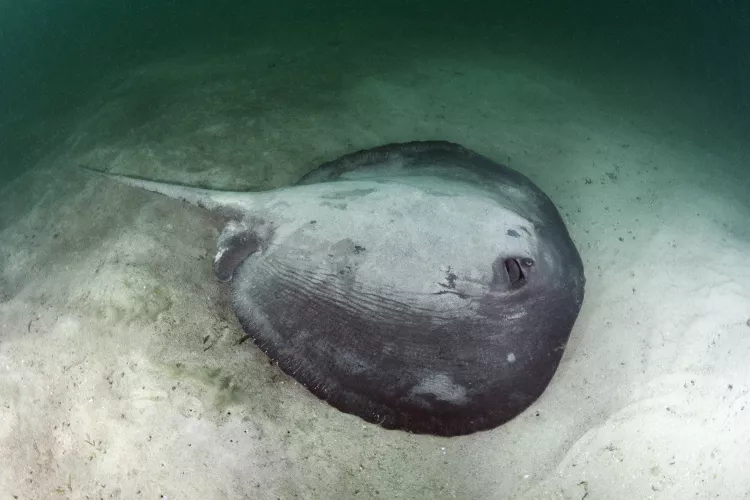
Fortune favours the brave
Before The Washing Machine could start its next spin cycle, we fled deeper, onto a featureless sandy slope. At 25m, there was not so much as a sea star to look at. Most divers would have called off the dive at this point, but if you want to find unusual animals, you have to dive in unusual places.
Levelling out, we kicked north, aiming for a spot where the visibility was really awful. Sure enough, at the centre of a small sandstorm, we found an enormous Pacific chupare stingray (Styracura pacifica) flapping its pectoral fins to unearth molluscs for lunch. Lifer number four!
Like the Pacific nurse shark, this species was also recently separated from its Caribbean counterpart, but in a more radical move, both chupare rays were kicked out of the marine stingray family altogether, and placed in the family Potamotrygonidae, with the freshwater stingrays that inhabit the river systems of South America.
It is intriguing to me that this ray’s ancestors initially moved from the ocean into freshwater rivers (an extremely difficult biological feat), and then, perhaps responding to diminishing food supplies, a more recent ancestor changed course and moved back in the ocean. Adapt or die, it would seem.
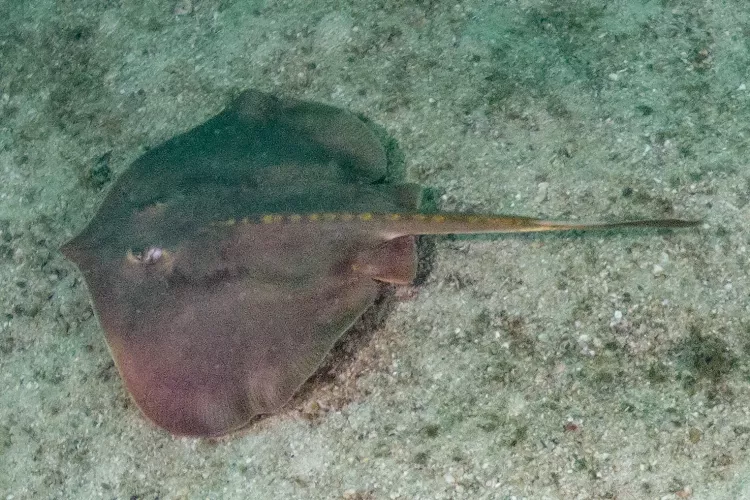
Final day
Having already encountered nine species of Costa Rican rays, on our final day, there was very little left to look for. Theoretically, there were one or two more species of ridiculously rare round rays that were long shots at best, but neither of us knew where to look for them, so we decided to explore more of the sandy slopes south of Playa Del Coco, just to see what was out there.
Scorpeana. We fell in at a site called Scorpeana, but ignored the reef completely, preferring to drift down into the gloomy nether regions. At 30m, we hung a right and began a very slow accent up the sandy slope.
Ray hunting is not exactly a high-adrenaline activity, so I had completely zoned out by the time my eyes settled upon a small, half-buried ray laying in a depression on the sand. Pointy nose, no markings, thorny tail. What! This had to be a spinytail round ray (Urotrygon aspidura).
By the time this had registered, the tiny ray was heading for deep water. Pursuing it briefly, I snapped a fuzzy proof of life shot and then let it go. Alas, not much of a photo opp, was lifer number five…
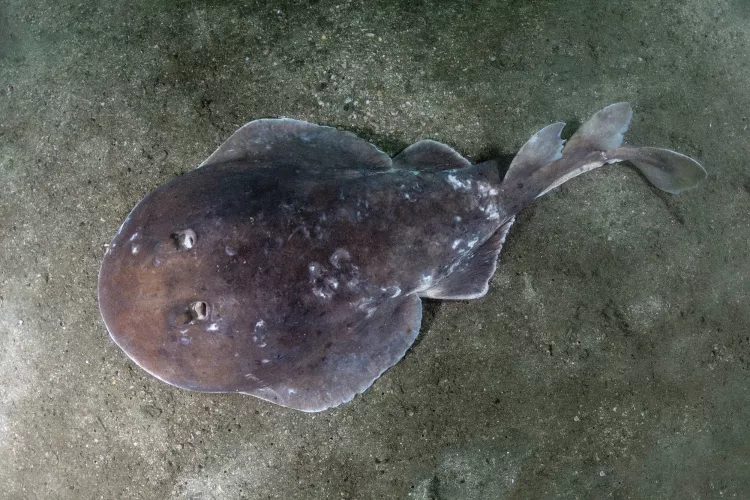
Playa Ocotal. Our final dive was at Playa Ocotal, just south of Playa Del Coco. Again, we drifted down into the marine desert, but at 20m, we stumbled upon a huge, unknown reef, teeming with fish.
Near the deeper side of the reef, an adult Mazatlan butterfly ray took flight before I could fire a single shot, but another unusual shape in the sand soon caught my eye. From its size, at first, I thought it was an angelshark, but after a little fanning, I uncovered the most enormous, battle-scarred giant electric ray (Narcine entemedor) I had ever seen. Although electric rays deliver a relatively mild shock, I gave this brute a wide berth as it muscled its way back into the sand.
After showing us eleven ray species, the ocean finally run out of surprises, so we ascended to the top of the new reef, that Luis later named Murch Mountain.
On the drive back to San Jose, I thumbed through the scant records I had found about other rare Costa Rican ray species. As far as I could tell, no other species had ever been seen by divers, but divers do not generally swim around in featureless marine deserts where reclusive rays might be found.
By the time we reached the capital, we had hatched a plan for a return visit. Next time, we would explore the Gulf of Nicoya—a deep, dark backwater with no dive sites and notoriously horrendous visibility. I could tell already, our next trip was going to be awesome!

